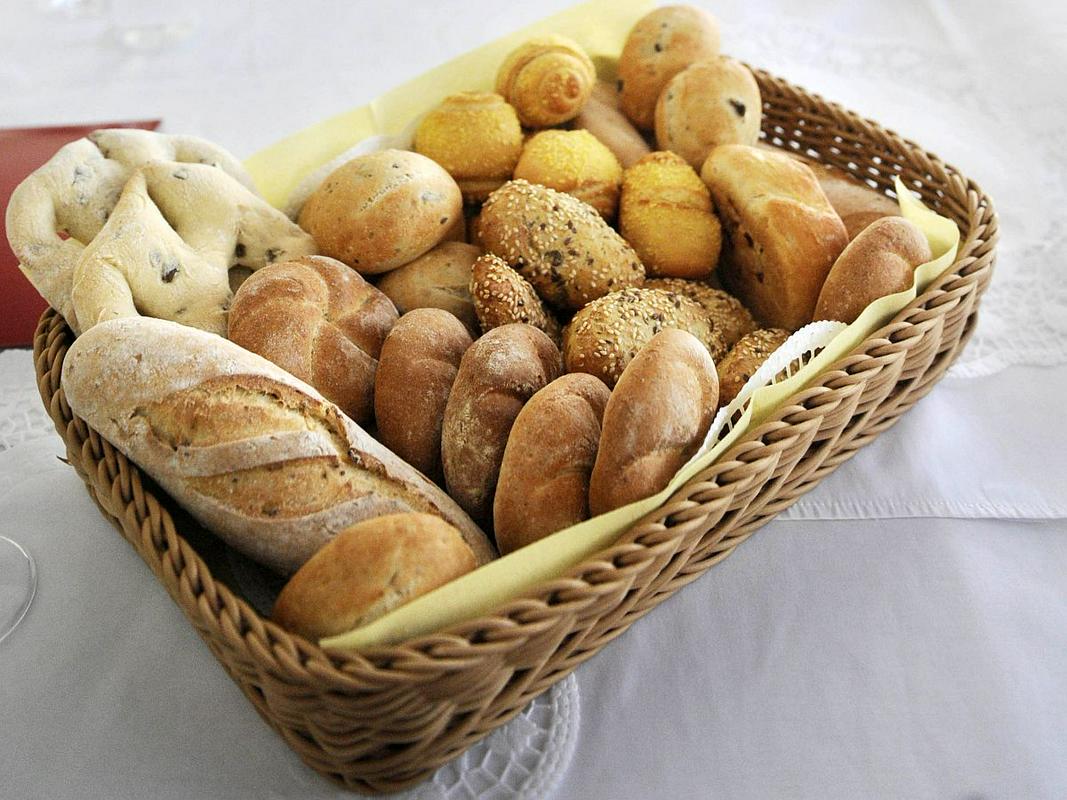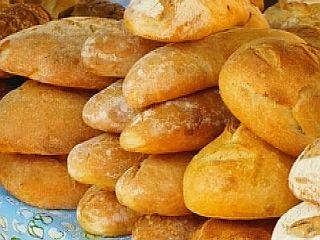

Shelves filled with various types of bread demonstrate the exceptional importance Slovenians attribute to this basic food. Many old proverbs testify to its significance: good as bread; going abroad to earn bread; hasty statements that have to be retracted are ‘bitter bread to be swallowed’; if a person travels half the world, the best bread is always made at home.
Although in Slovenia, possibly due to modern dietary trends, bread sales are falling, we still eat some 65 kilos of bread per capita a year, according to research by Valicon at the beginning of this year. We are thus still considered great consumers of bread and other bakery products. As many as 78 per cent of respondents define bread as an important part of their everyday diet. We rarely throw it away, and we have interesting ways of using it even when it is no longer fresh. It is an important asset of Slovenians, which we not only enjoy purchasing, but also enjoy making at home.
The consumption of bread with different spreads is very popular. It found its place as a traditional Slovenian foodstuff also in a campaign conducted by the Ministry of Agriculture and the Environment, ‘Traditional Slovenian Breakfast’, which educates children in kindergartens and primary schools about the tradition and importance of breakfast. In addition to bread, the Traditional Slovenian Breakfast also includes butter, honey, milk and an apple.
The traditional role of bread for Slovenians
“The symbolic significance of bread for Slovenians is very interesting, since it is associated with rituals. Many, not only Christian, but also pagan celebrations and traditions were connected with bread, which in this regard was not merely food but a ritual symbol, the material understanding of abundance, an attitude to the harvest, a tangible metaphor for a newborn, and all things divine etc.” explains Bogataj.
There is an emotional connection between bread and Slovenians. Bread was also an important gift in various rituals, and in this role it represents an ancient form of charity. In this regard, white bread was particularly important, because it was not served every day, but only on special occasions.
And what is typical Slovenian bread?
Different types of bread are made in the 24 different gastronomic regions. A Leški loaf (buckwheat bread with walnuts) can be tasted in the Gorenjska region, bige (white milky bread) is popular in the Primorska region, sour rye bread in the Koroška region, bread mixed with potato in the Dolenjska region, excellent pogača (flatbread) is made in the Bela Krajina region, etc.
“It is difficult to decide which bread is the most Slovenian. Every gastronomic region in Slovenia has not only one, but several types of bread. We must also make a distinction between everyday and festive breads. Bread made from different cereal mixtures, so-called bread mixtures, is very frequent. There were several types of these mixtures; one of the popular was soržica, i.e. a mixture of wheat and rye. One of our most typical desserts, potica, which is known today in over 100 sweet and savoury variants (as per its filling), was initially a type of bread for festive occasions which had different additions, such as herbs, pork crackling, raisins, eggs, etc. In 1689, the polymath Janez Vajkard Valvasor wrote that buckwheat bread was as black as soil. Rye flour was more frequently used for bread than buckwheat, which was more popular in other dishes.”
Bread in the past and now
“Slovenian cultural heritage includes a range of bread varieties, which vary in their preparation and function. As far as preparation is concerned, I have to mention the many cereals from which bread was made. But not only cereals, also other produce: beans, herbs, and even cooked potato was used from the 19th century onward to make bread when harvests were poor or there was a general shortage among poor social groups. With changing attitudes to eating habits in modern times, the bread of the poor again became interesting and particularly delicious,” explains Bogataj.
In the past, bread and other dishes were made in bread ovens. The preparation of bread is very different today. But small boutique bakeries are returning to traditional baking. Consumers have also become more demanding and require higher quality.
We are re-examining our cultural heritage; we do not want to copy it, but it serves as a starting point for new creative experiments in baking which are oriented towards healthy eating. Sour dough has become popular again. This was formerly made with wine lees. A vast array of bread with different herbs, dried fruit, nuts etc. is available on the market. The range of bread with no additives or baked in the traditional style and similar is most notable.
The offer of seasonal bread is becoming more prominent. “I am pleased that suitable types of bread are being prepared according to individual seasons, every day or holiday, i.e. in accordance with everything that we produce with our knowledge, together with nature and with what is available in a certain season,” adds Bogataj. Tradition thus lives on in a modern form and with delicious flavours for all bread lovers. As for Slovenians and bread, we can certainly say that this love is great.
Polona Prešeren, SINFO

































































